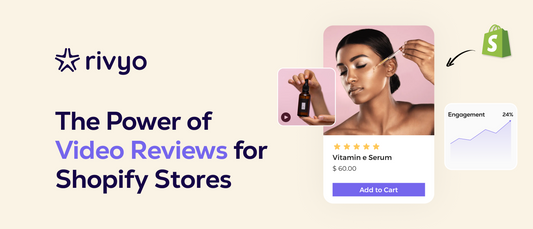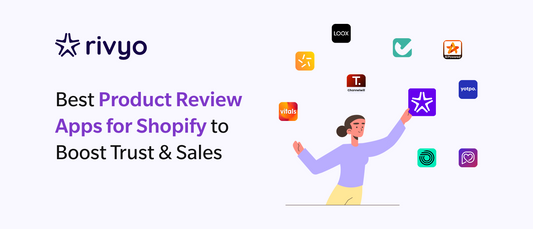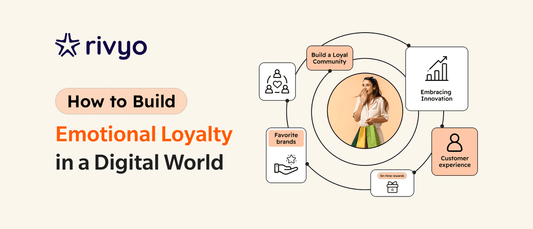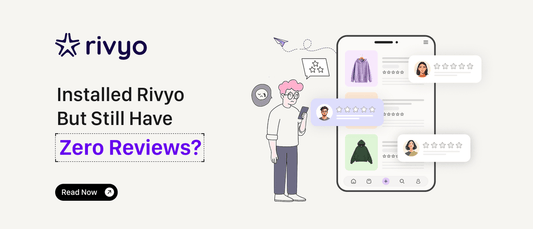The Psychology Behind Customer Reviews and Purchase Behavior
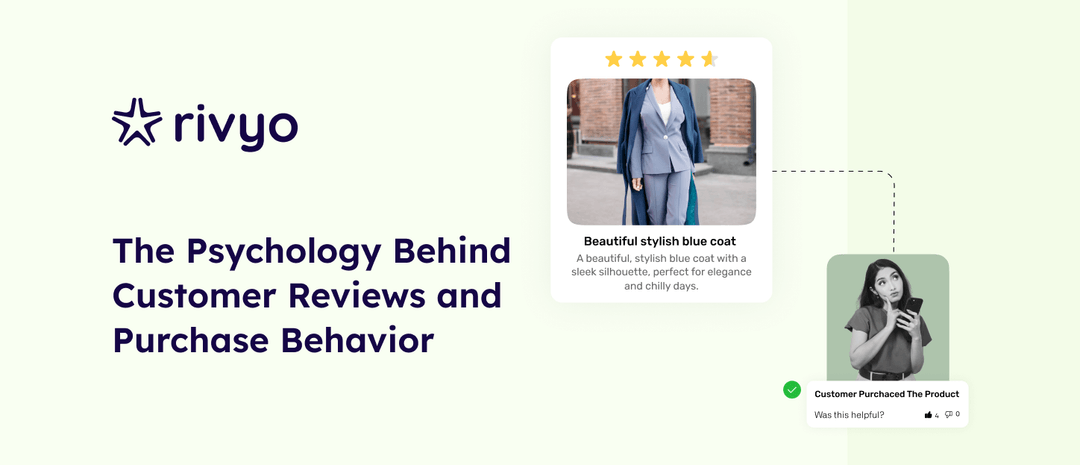
Imagine that you're shopping online for a product which you've never used before. You skip the product description, specifications, and even the professional photos, and go directly to the reviews. Sounds familiar? You're not alone.
In the present day, customer reviews are the new word-of-mouth. They're social proof in action, and real voices affecting real decisions. But what really goes on in a buyer’s mind when reading reviews? How do these digital testimonials affect trust, emotions, and finally, purchases?
In this article, we delve into the psychological science behind customer reviews and explore why they hold such a powerful sway over consumer behavior and how businesses can benefit from them effectively.
1. The Role of Social Proof in Decision-Making
Humans are social creatures. We depend on others to decide what is right, safe, or valuable, a psychological theory known as social proof. When buyers notice that a product has hundreds of positive ratings, they immediately believe it is worth purchasing.
"If others like it, it must be good." - That is the soft voice in every consumer's mind.
Social proof builds instant trust, especially in unknown situations. That’s why reviews act as a form of crowd validation, a shortcut that allows customers to feel more confident in their decisions.
2. Emotional Triggers in Reviews
We buy emotions, not just products. Reviews that represent happiness, relief, excitement, or frustration inspire our own emotional memories. A customer read, "This backpack saved my trip!" doesn't only read the words; they feel the relief of convenience and dependability.
Emotional storytelling in reviews helps readers empathize, which leads to higher engagement and increased likelihood of purchase. Brands that highlight emotionally charged reviews in marketing often see stronger results.
3. Cognitive Biases Influenced by Reviews
Our brains are designed with cognitive shortcuts that allow us to understand information more rapidly. Reviews frequently trigger these biases:
- Confirmation Bias: People generally believe reviews that match their expectations. A brand-conscious buyer will favour reviews that address quality and appearance.
- Negativity Bias: We typically pay greater attention to negative experiences. A single negative review may beat 10 positive ones.
- Time Effect: Recent reviews are perceived as more trustworthy because they reflect the current situation of the product or service.
Understanding these biases helps brands strategically present reviews to influence perceptions positively.
4. Trust and Authenticity Signals
Not all reviews are equal. Today’s consumers are smart; they can detect fake, overly generic, or bot-generated testimonials. Authenticity matters.
- Verified purchases, detailed descriptions, and photos increase review credibility.
- Reviews with specific details like, “My phone battery survived for 10 hours straight on my camping trip” feel more genuine.
- User-generated content (UGC), such as selfies or unboxing videos, increases trust.
5. Impact of Review Ratings on Conversion Rates
Star ratings are a powerful shortcut for making decisions. However, perfection isn’t always persuasive.
Research shows:
- Research indicates that 4.5 stars generally outperform perfect 5-star reviews. Why? Because they look more realistic.
- A mix of slightly negative reviews signals transparency, which can actually boost trust and sales.
Numbers matter, but authenticity and balance matter more.
6. The Herd Mentality: FOMO & Bandwagon Effects
When people see a product is trending or highly rated, they feel a psychological pull: “If everyone’s buying this, maybe I should too.” This is called the bandwagon effect, closely linked to the Fear of Missing Out (FOMO).
Scarcity and popularity work together to trigger fast decision-making. That’s why showing:
- “1,000+ reviews”
- “Best Seller” badges
- “Trending now” tags
…can significantly improve conversion rates.
7. Influence of Negative Reviews and How They Can Help
Negative reviews are frequently viewed as something to fear or hide, but in reality, they can be a hidden asset in your marketing strategy. While it's true that a large amount of negative feedback can scare buyers, having a few mixed reviews actually makes your product and brand appear more honest, human, and trustworthy.
Surprisingly, negative reviews don’t always hurt business. In fact, they can:
- All 5-star reviews are not good all time. Shoppers may assume they’ve been filtered, faked, or incentivized. In contrast, a few low-star reviews show that the review system is transparent, which builds trust and adds authenticity to the product feed.
- Highlight issues the brand can publicly address and help customers, and show commitment to improvement.
- Smart brands use negative feedback to build trust by apologizing genuinely, offering solutions, sharing updates and resolving issues proactively. This builds brand credibility and customer loyalty over time.
- A little negativity can make positive reviews seem even stronger by comparison. When customers see that the negative review is about something irrelevant to them (e.g., color preference or shipping delay), they may trust the positive reviews more.
8. Visual and Video Reviews:
Reading a 5-star review is good. Seeing the product in action is even better.
- Photos in reviews show how the product looks in real life.
- Video reviews allow potential buyers to hear tone, emotions, and see product functionality.
- These formats reduce purchase anxiety by giving a sense of firsthand experience.
Incorporating visual testimonials into product pages can lead to significantly higher engagement and fewer returns.
9. Cultural and Demographic Differences in Review Perception
Cultural values and demographics impact how people observe reviews.
- Younger audiences are more likely to trust peer-generated content compared to older ones.
- In some cultures, community consensus is more important, while in others, individual expert opinions hold more relevance.
- Regional language and tone can more affect perceived authenticity.
Brands should customize review strategies based on audience segments for maximum impact.

Practical Tips for Boost Review for Your Businesses
1. Ask at the Right Time
Send review requests post-delivery when satisfaction is high. Use automated emails through tools like Rivyo. Timing increases response rates and review quality.
2. Keep It Simple
Make the review process quick such as star rating, short comment, optional photos. Avoid long forms that cause drop-off. Because, simplicity = more reviews.
3. Showcase Smartly
Place top reviews at the top of the product and homepage. Use filters (e.g., by rating or keyword) to help browsing. Strategic placement improves trust and conversion.
4. Use Visual Reviews
Encourage photo/video uploads from real users. Visual proof is more convincing than text alone. Add galleries or UGC sections on product pages.
5. Respond to All Reviews
Reply to both positive and negative feedback. Show customers you’re active and care about their experience. Good responses can turn bad reviews into brand wins.
6. Market with Reviews
Add review quotes to emails, ads, and social posts. Let happy customers speak for your brand. Authenticity boosts click-through and conversion.
7. Personalize Review Display
Show relevant reviews based on product use cases. Example: Highlight “great for travel” for backpacks. Tailored content connects faster with buyers.
8. Learn from Reviews
Track common complaints or suggestions. Use insights to improve products and update listings. Your best feedback often comes from users.
9. Support Follow-Ups
Flag negative reviews for quick resolution. Offer help to turn frustration into loyalty. Responsive service can lead to second chances.
10. Use Tools Like Rivyo
Automate review collection and display with Rivyo. Import from other platforms and customize layouts. Streamline review management while building trust.
Conclusion
Reviews from customers are not just feedback; they are psychological triggers which affect how people think, feel, and buy. Reviews help convert hesitation into action by creating trust, affecting emotions, and boosting social proof.
But their power extends beyond conversions. Reviews provide real-time insights into customer demands, allowing businesses to enhance products, marketing, and service. By listening and responding, you build trust and loyalty, converting customers into brand ambassadors.
Use reviews wisely. Allow your customers to do the selling.
Frequently Asked Questions (FAQs)
1. Why are customer reviews so important in online shopping?
Ans: Customer reviews serve as social proof, they show that others have bought and liked (or disliked) a product. They help build trust, reduce uncertainty, and guide purchasing decisions by offering real-life experiences from fellow consumers.
2. Do negative reviews always hurt sales?
Ans: Not necessarily. A few honest, negative reviews can actually increase trust, showing transparency and authenticity. When handled properly, they can also highlight your brand’s commitment to customer service and improvement.
3. What star rating is most effective in driving purchases?
Ans: Interestingly, a perfect 5-star rating can seem too good to be true, but research shows that 4.5 stars often perform better, as they feel more realistic and trustworthy. A balanced mix of ratings is typically more persuasive than all-perfect scores.

Rivyo Reviews & Loyalty

Try Rivyo or Book a Demo
Boost trust and sales by showcasing authentic product reviews on your Shopify store with Rivyo.









